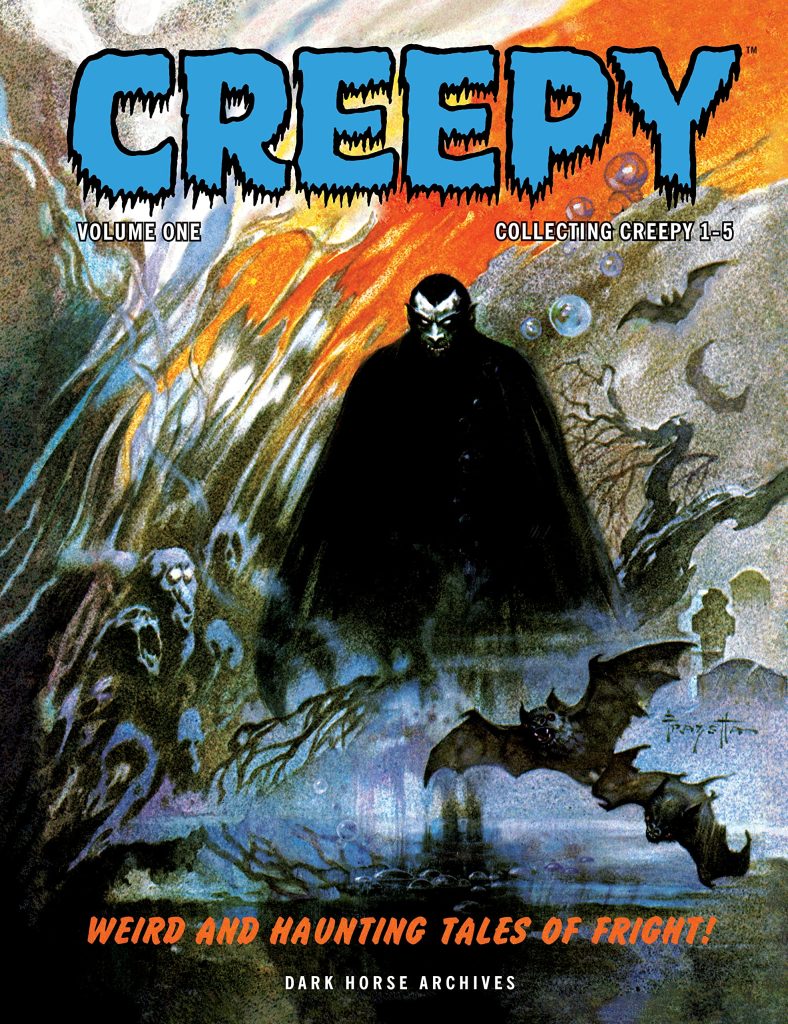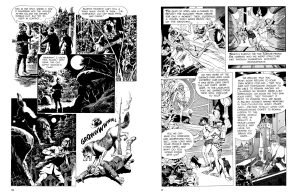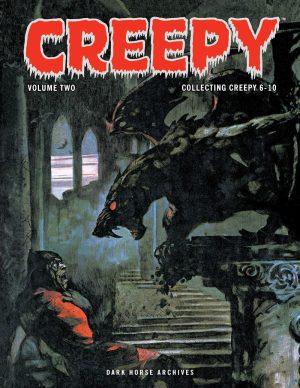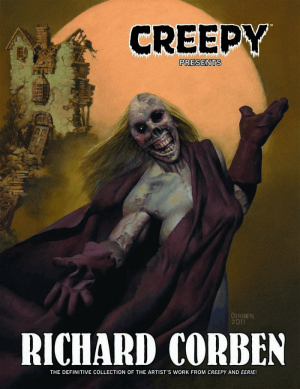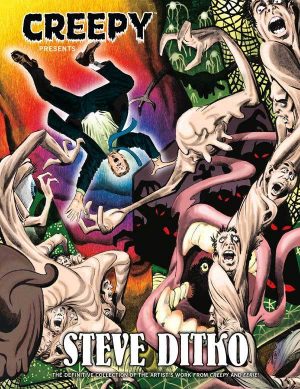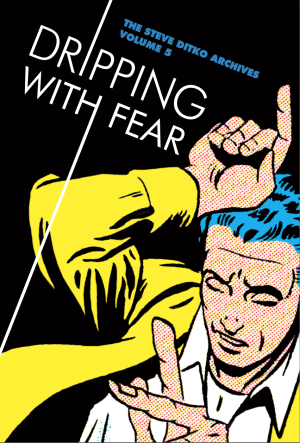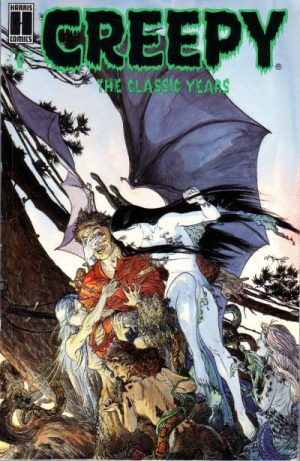Review by Frank Plowright
In 1964 the gold standard for horror comics remained the EC line of the early 1950s, which matched formidable artists with gleefully gruesome, yet creative stories. They were emasculated by the introduction of the Comics Code, to which all publishers wanting distribution had to sign up. That, though, didn’t apply to magazines, and that’s what Warren published.
After fifteen years of hardcover only, as of 2023 there’s a paperback version of this anthology of sparkling black and white horror. Both versions come with an erudite introduction from Jon B. Cooke, explaining how Creepy came about in 1964, and contextualising the editorial viewpoint and some individual strips. The broad version is it attempted to emulate the quality of the EC horror line by using many of the artists who worked on those comics, plus several others who hung about with them back in the day, but hadn’t quite made that breakthrough. Ten years later the likes of Frank Frazetta and Angelo Torres produced work worthy of sitting alongside pages by Reed Crandall (sample art left), George Evans, Joe Orlando and Al Williamson (sample right). Throw in Gray Morrow and that’s some line-up for any debut.
While his cover paintings adorn every issue, Frazetta’s final comics work is in that first issue, greatly elevating Larry Ivie’s ordinary Werewolf script. Frazetta’s power is a departure from the illustrative realism otherwise predominating. It doesn’t seem the obvious choice of artistic style for horror, yet with the skills of imaginative artists you’d never think stories of vampire hunts (Torres) and modern day witchcraft (Morrow) require anything else, although Orlando oversells his expressions. Even among the exalted company Williamson stands out for his polish and composition, so overwhelmingly good that it’s impossible to select his best. However, Archie Goodwin’s sharp script about a newspaper strip artist who claims the byline yet delegates all tasks to others is novel and smart.
Over the first couple of issues the script quality varies, but Goodwin gradually comes to write everything, and because the art is so stunning his contribution is under-valued. He can turn out gothic horror easily enough, but knows an anthology can’t survive on pastiche, homage and cliché, so introduces a considerable variety to his scripts, which veer from the recognisable real world of the 1960s to period pieces spanning history and space exploration of the future. He works to a formula, and can be predictable, but generally isn’t, and his exploitations of human nature are neat morality tales. No matter how good the art, without Goodwin’s skill these stories wouldn’t be as memorable as proved by almost everything written by someone else.
Creepy Archives Volume One has a viable claim to be among the greatest collections of comic art ever published, and with the paperback edition available for under £20/$20 (as of writing) you should either have it already or be putting your order in now. Much the same applies to Creepy Archives Volume Two.
